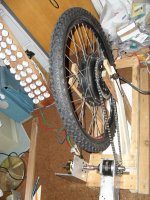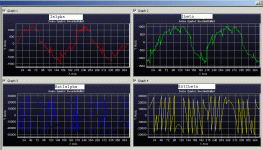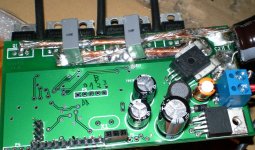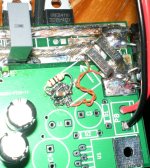PowerPedro
100 mW
- Joined
- Mar 12, 2009
- Messages
- 41
Nice Burtie!!
Do you have some readings of phase currents compared to supply current under no load? Would be interresting for me to compare them to mine. Iq, Id would be fine too... My FOC algorithm is running now but i underestimated the high phase currents and most likely have to take stronger current sensors.
Many thanks
Do you have some readings of phase currents compared to supply current under no load? Would be interresting for me to compare them to mine. Iq, Id would be fine too... My FOC algorithm is running now but i underestimated the high phase currents and most likely have to take stronger current sensors.
Many thanks





